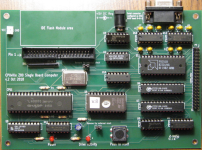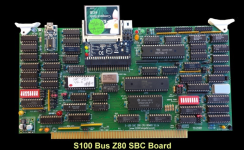I mean, I guess if that sounds like it's a thing you want I guess that's great, but I will just chuck this out there: A way-bigger-than-you-could-ever-need CF or SD card plus an adapter is about... $20, $25? They support LBA, which makes them easy to address, and if you really don't want to deal with sector blocking/deblocking (which from what I've seen in the CP/M disk driver code isn't that big of a deal) you could just use 128 bytes per sector. Sure, you're throwing away three quarters of the card, but who cares? I see Samsung Evo 32GB SD cards on Amazon for $7, that's less than a dollar per gigabyte even if you only use a quarter of it. Even if we allow that the card plus an adapter will be $25... heck, let's make it a nice round $32 to allow for the GAL, buffer, and sprinkling of resistors and decoupling caps it'll take to interface it to a Z-80 bus, that's $4 a gigabyte for more storage than CP/M could ever, ever use. (By a couple of orders of magnitude.) That makes it a dollar for 256 megabytes vs 256 kilobytes, or one thousand times cheaper, than rolling your own flash disk.
These devices are great for replacing a system ROM (IE, where you need random "read mostly" access but want the option to update in-place), but they're going to make terrible general purpose disks. The datasheet says a write cycle can take as much as 10 milliseconds; that's in the ballpark of floppy slow, nothing like a RAMdisk. Which, again, I guess will be fine if the only thing you want to use this for is a dedicated virtual floppy to load your OS into memory from, but if I were going to do that I'd probably try to engineer it as simply as possible, IE, a really nongranular page-flipper that'd reserve the first chunk of the ROM for the actual bootstrap ROM and for the disk portion just do some phat block moves through a bounce buffer, I wouldn't build an elaborate sector pager around it.


